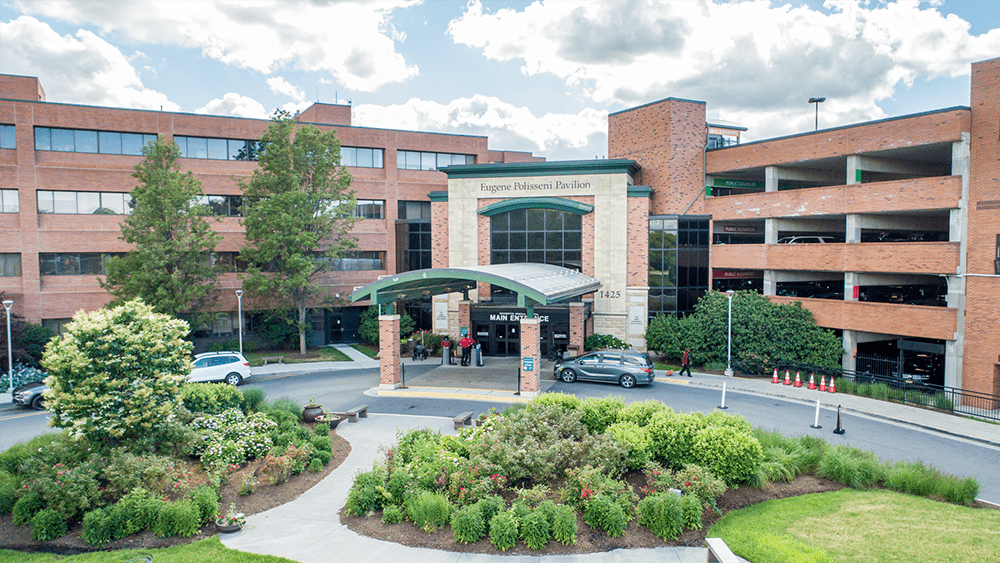
As part of Lab Professionals Week, Rochester Regional Health is highlighting the work of its laboratory workers and celebrating their dedication and hard work throughout the year.
At least 80,000 surgical tissue samples are handled each year at Rochester Regional Health in the Anatomical Pathology Laboratory – both hospitals and outpatient surgical facilities. Three hospitals within Rochester Regional Health feature pathology departments: Rochester General Hospital, Unity Hospital, and Canton-Potsdam Hospital.
Our laboratory pathologist team explains how a tissue sample travels from the operating room until it is diagnosed by a pathologist, and the amount of work it takes to get patients and doctors the answers they need.
During a surgery, a piece of tissue might be collected as a specimen for a variety of reasons – a breast from a mastectomy, a biopsy of melanoma, a portion of a colon removed due to colorectal cancer, or other reasons.
Once collected, the sample is placed in the proper fixative or sent fresh, labeled with the patient’s name and anatomical site, then sent to a laboratory via a courier.
Once the specimen arrives at the lab, a specimen management technician will go through the intake process – which means checking to make sure the identification is correct, then entering the information into the Electronic Medical Record (EMR) and pathology systems.
Laboratory Professionals: What Roles Make a Lab Run?
After entering the information into the systems, the sample is brought into the gross room – the room where the pathology team will review and analyze each specimen.
Histotechnologists will process smaller biopsy-type specimens, while pathologist assistants handle larger samples, such as gall bladders, appendices, or tumor resections from larger organs.
“A pathologist assistant has the responsibility to know what a pathologist will be asking about every case in order to make the proper diagnosis,” said Eric Calianese, lead pathologists’ assistant with Rochester Regional Health. “They will know what the pathologist needs, dictate a gross description, take measurements, access margins, take small samples and put them in cassettes so histotechnologists can cut them and make slides out of them, and perform a number of other important tasks.”
The sample is taken from its formalin container and put into a block of paraffin, a waxy substance that allows excess water to be pressed out of the tissue and set it in place. After being set, histotechnologists can cut each sample into very thin slices – thinner than the diameter of a red blood cell.

Once the tissue is sliced and set onto a slide, it undergoes H&E (hematoxylin and eosin) staining to be viewed under a microscope. The staining process is performed by a machine and allows pathologists to eventually see different parts of the tissue at a cellular level within the sample.
After being stained, the sample goes straight to a pathologist, who will assess it and enter the information into the laboratory software. That information is then automatically uploaded to the patient’s chart and is available for next steps with a provider.
“Our goal is to review and sign off on cases as quickly as possible with a total turnaround time of 24-48 hours for smaller and less complex specimens and 7-14 days for complex specimens,” said Nicole Durie, MD, Laboratory Director at Unity Hospital. “Depending on the type and amount of testing that needs to be done, sometimes a specimen may take longer to diagnose.”
Some surgeries require an immediate diagnosis in the middle of the procedure because the diagnosis will change the decision that a surgeon needs to make. In these situations, a frozen section is performed.
The surgeon will ask a pathologist for a rapid evaluation of a piece of tissue while the patient is still in the operating room. The sample is cut, frozen in a few seconds using a special machine called a cryostat, then brought straight to a pathologist, who examines it under a microscope.
From start to finish, a frozen section takes 20 minutes from the time the sample is taken until the time it is diagnosed by a pathologist. Frozen sections arrive at least 1-2 times a day at larger hospitals.
Hundreds of samples move through the pathology labs at hospitals each day, relying on the hard work and knowledge of dozens of lab professionals.
Healthcare is an intricate network of systems and people who all rely on one another to bring the best possible care to all patients. This is reflected very clearly through the work of the pathology team at Rochester Regional Health.
“Pathology is always about the teamwork: who you are working with, and how trusted you feel,” said Elizabeth Parker, Director of Pathology Services at Rochester General Hospital. “I always wanted to be in healthcare but never wanted to be in front of patients like a physician. This is a good way to be part of patient care because pathology is such an important piece of patient care.”
“Hospital pathologists see patients, but instead of being in a hospital bed, our patients are on slides,” Dr. Durie said. “We are looking at them on a cellular level to help determine a diagnosis. Solving the mystery of the diagnosis and finding an answer to what was making a patient sick is very rewarding.”
